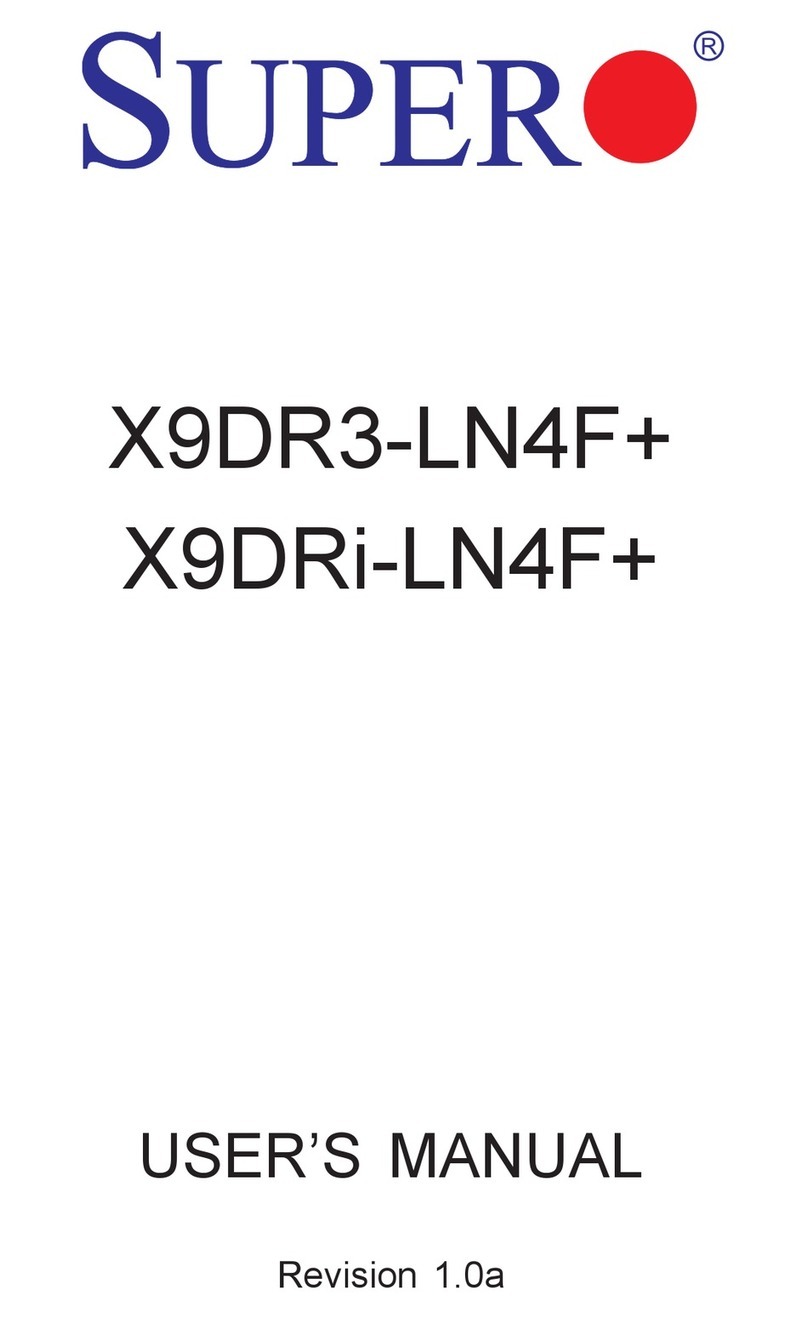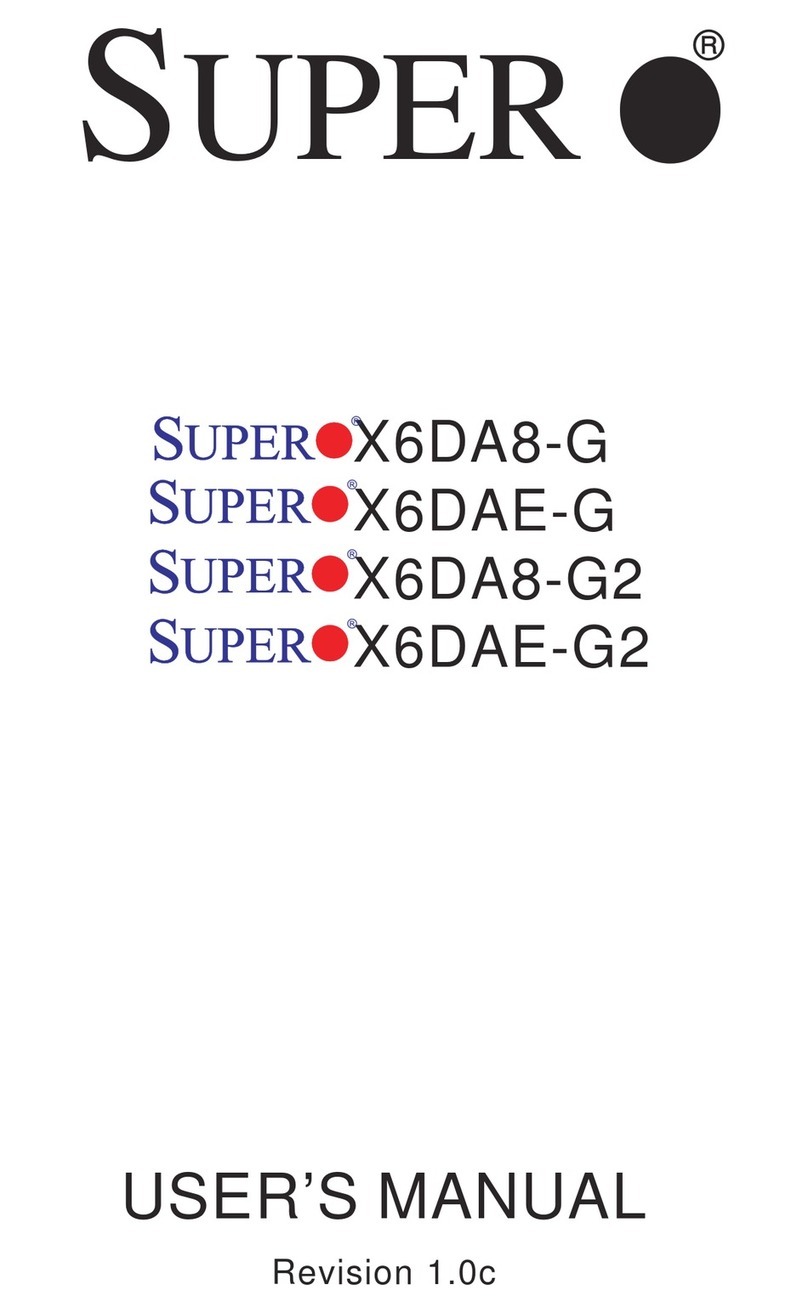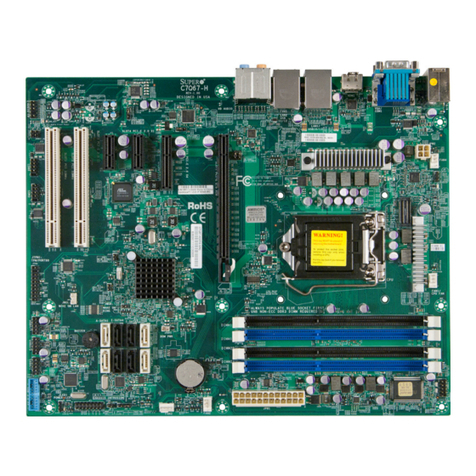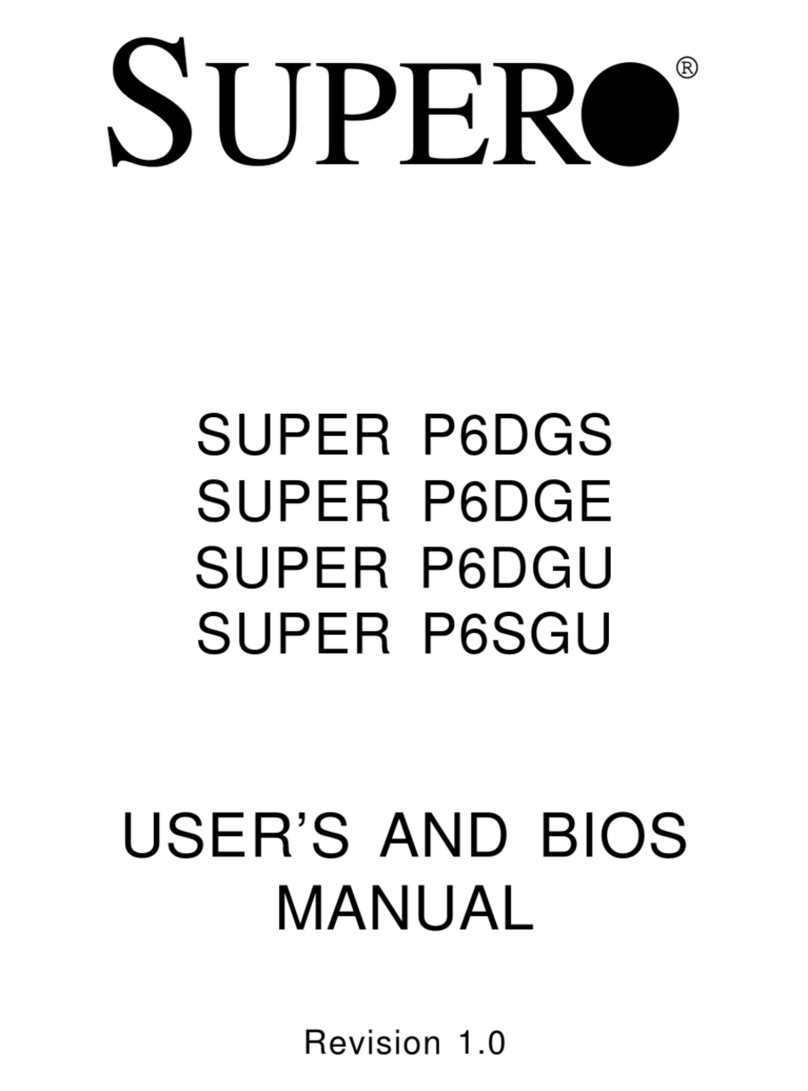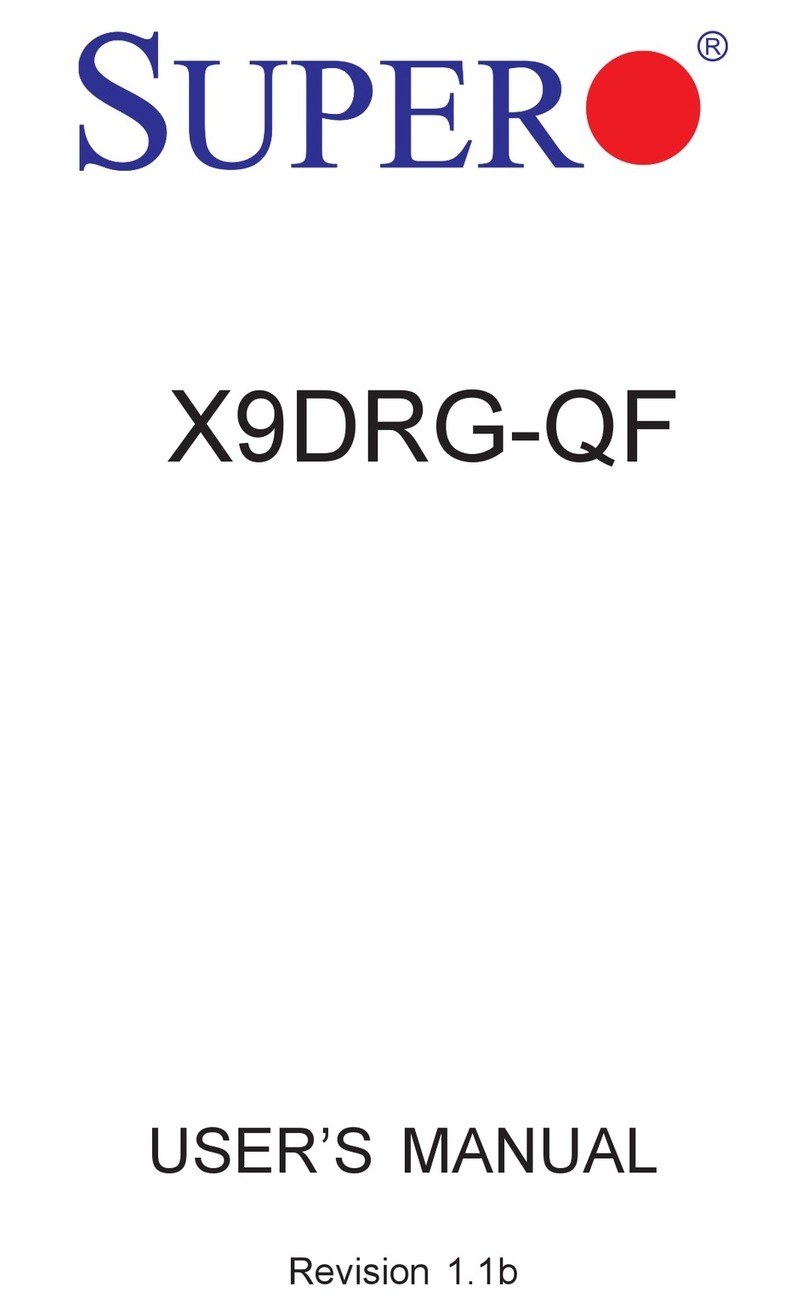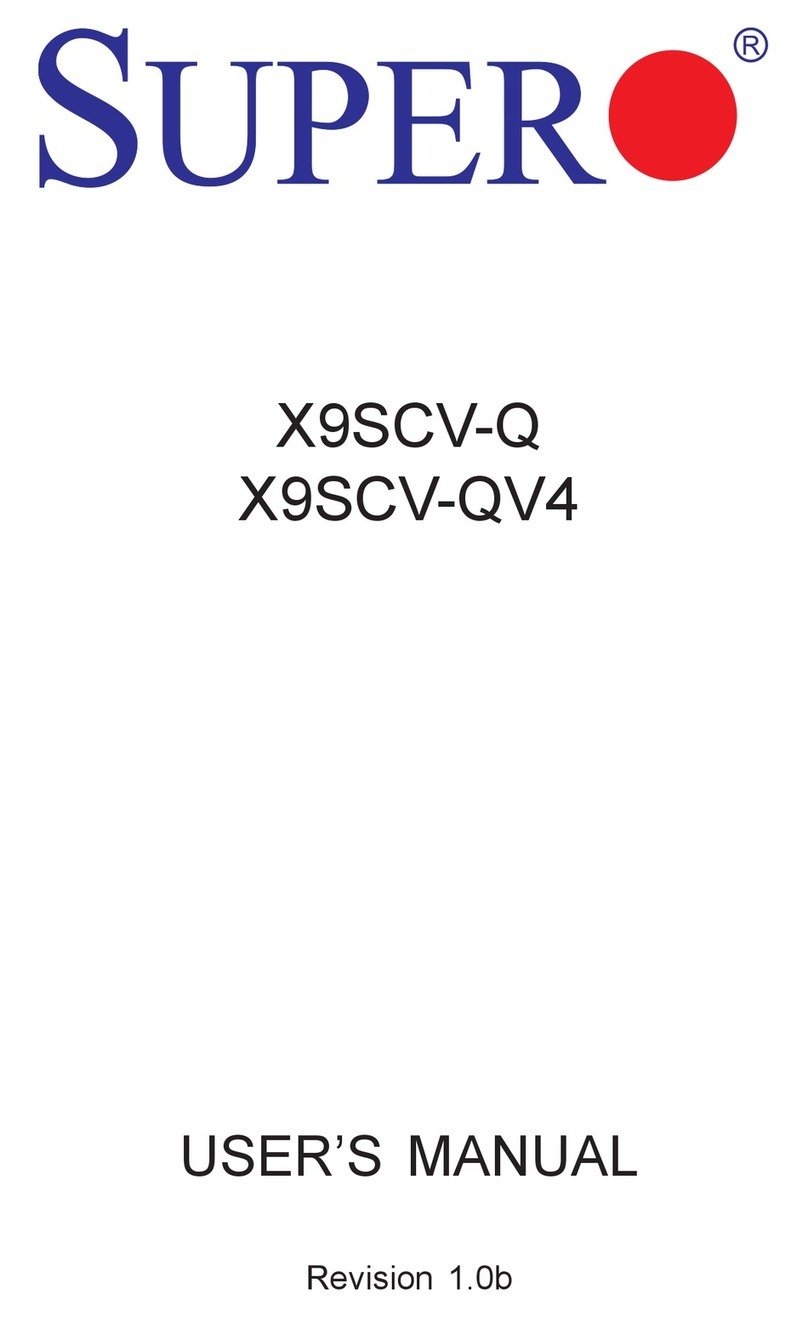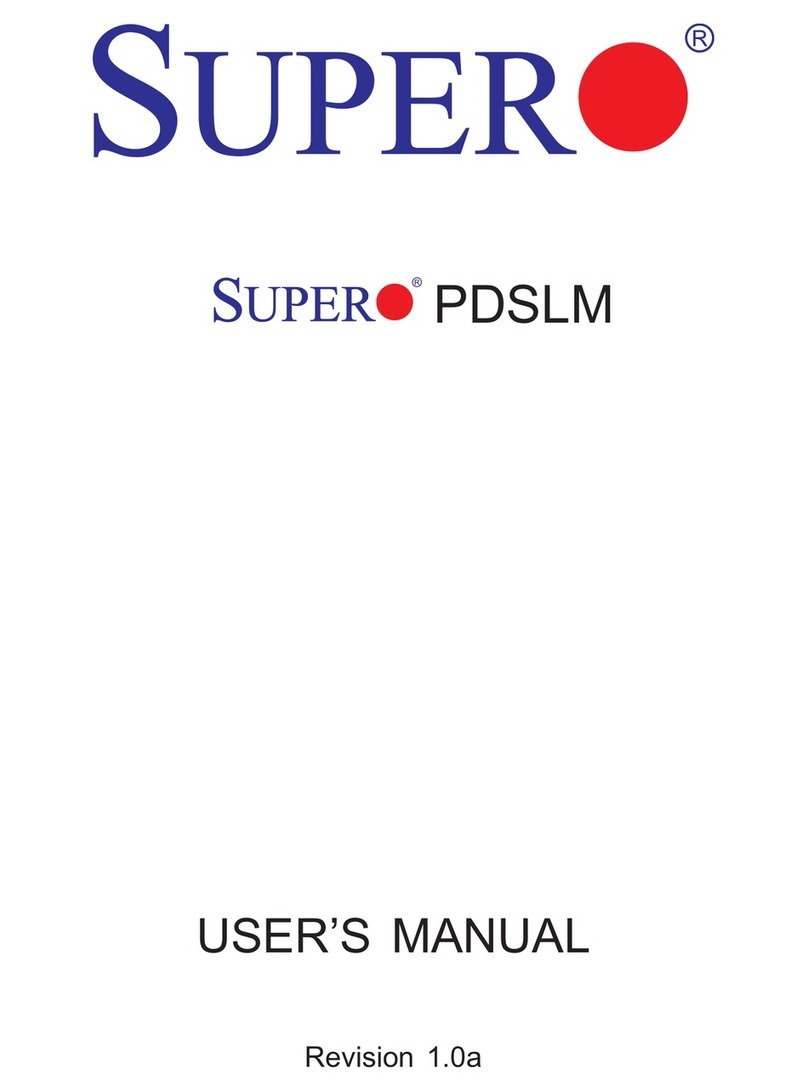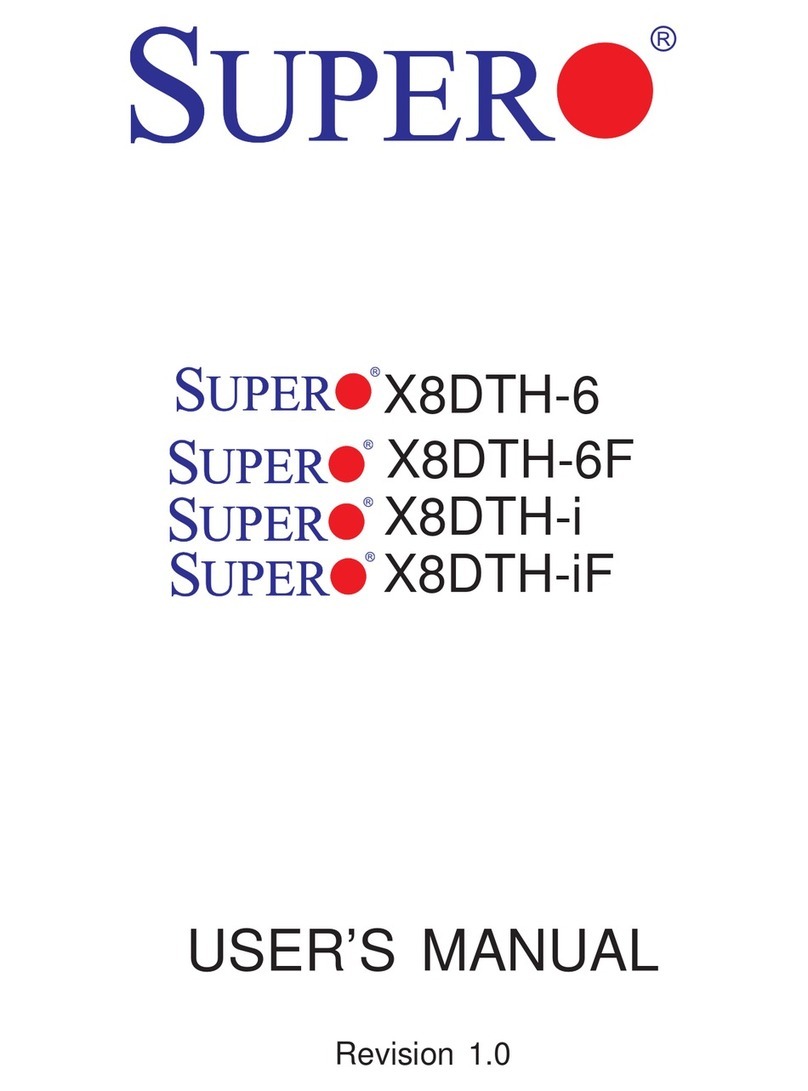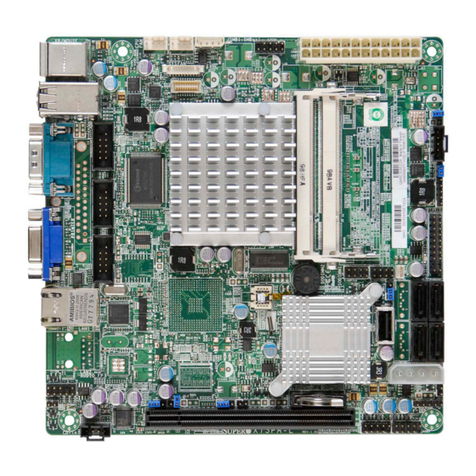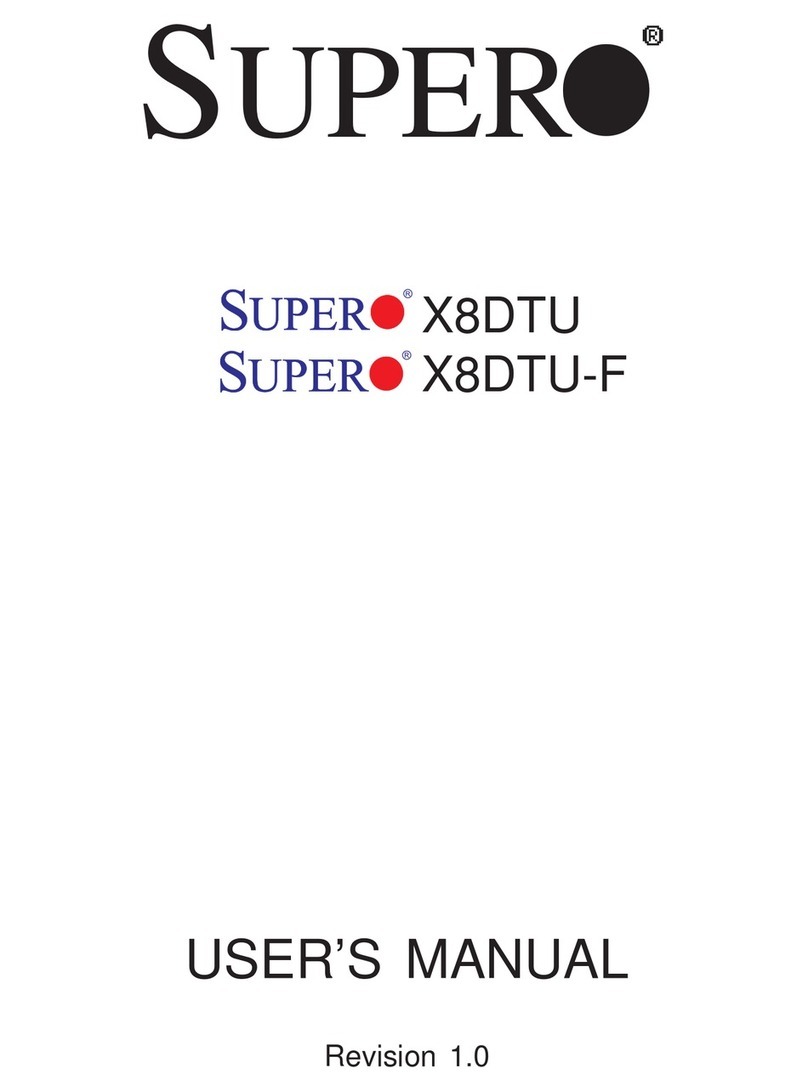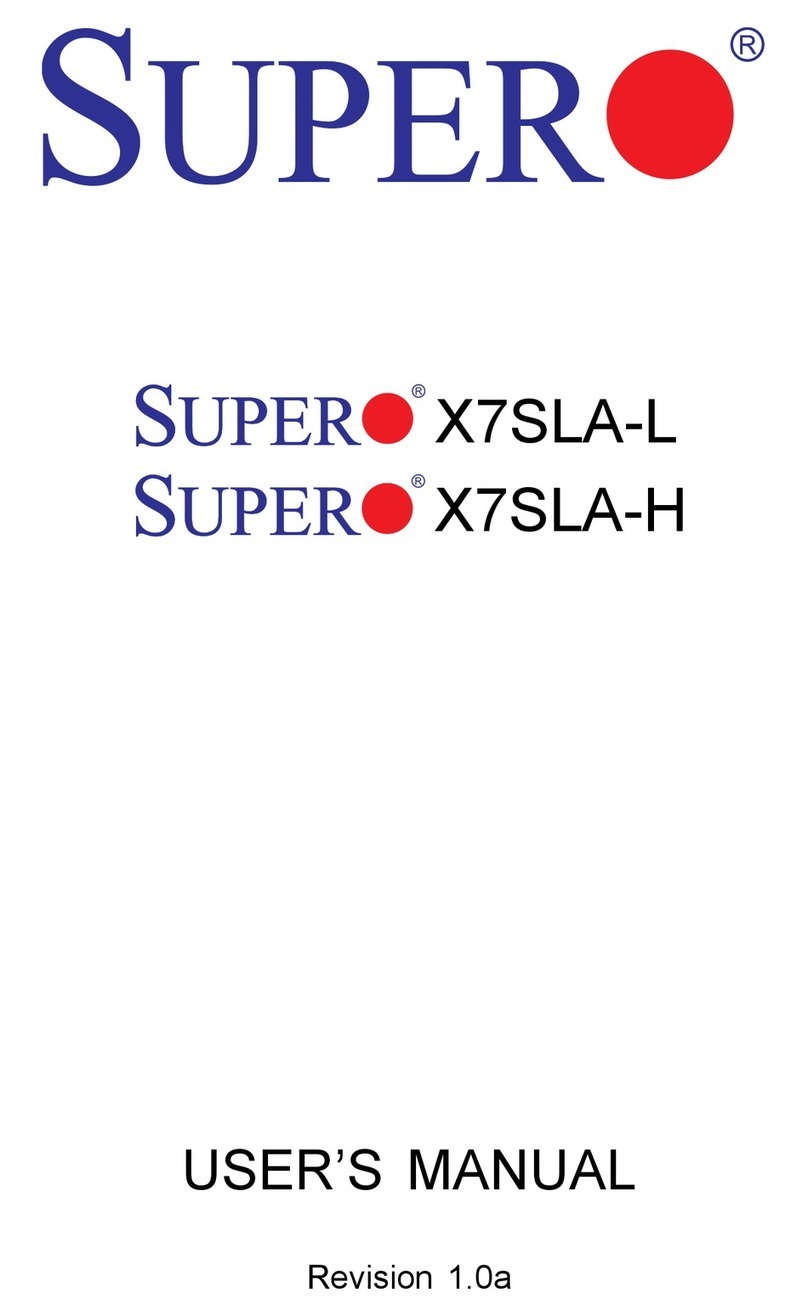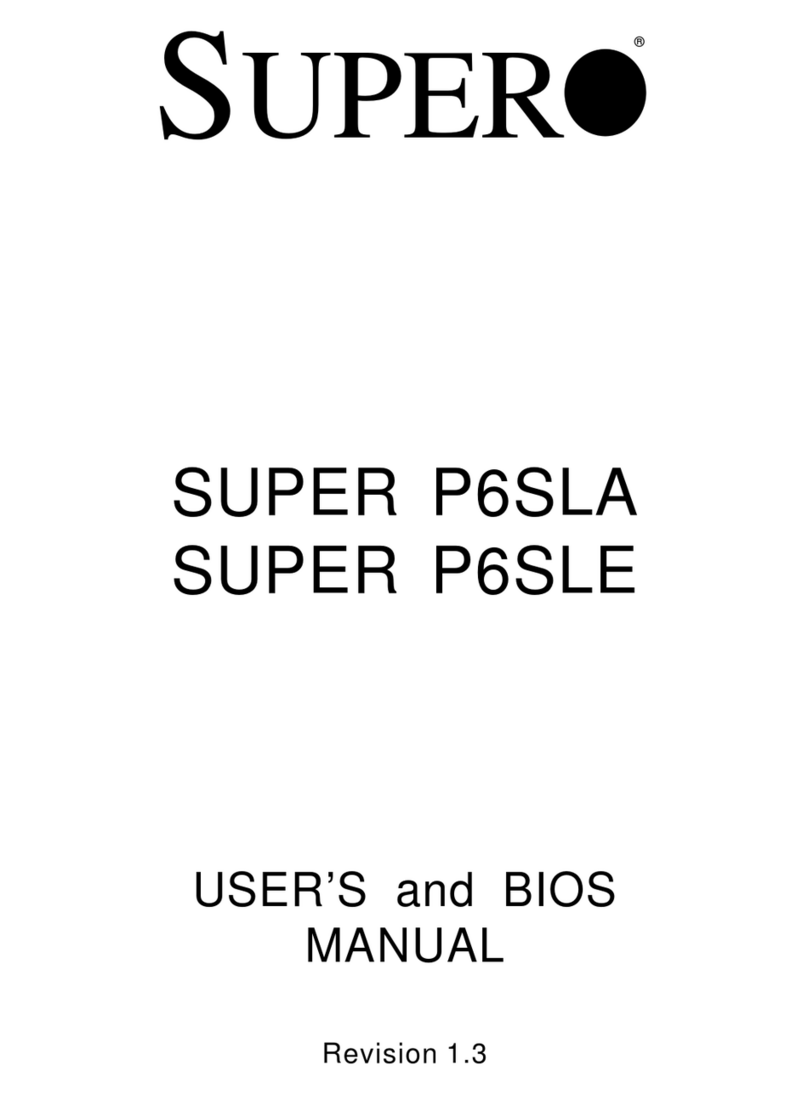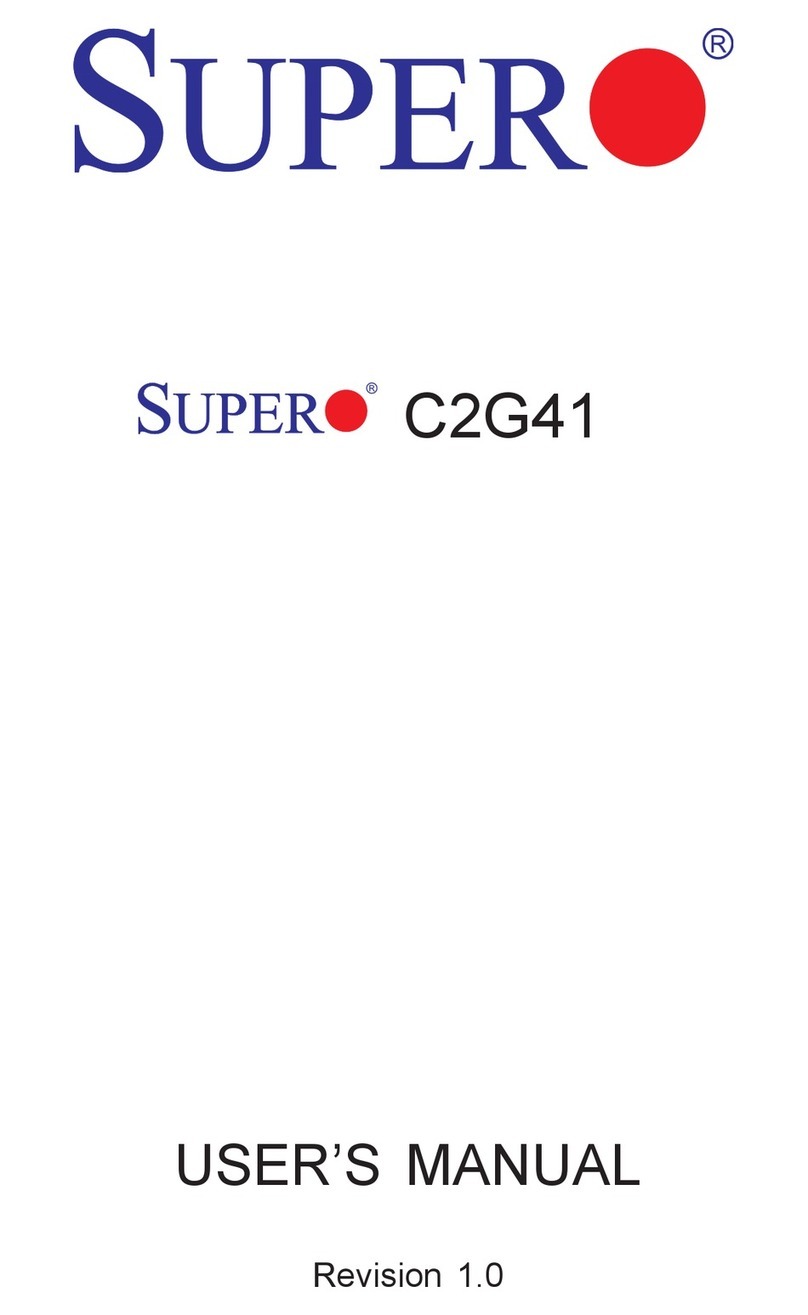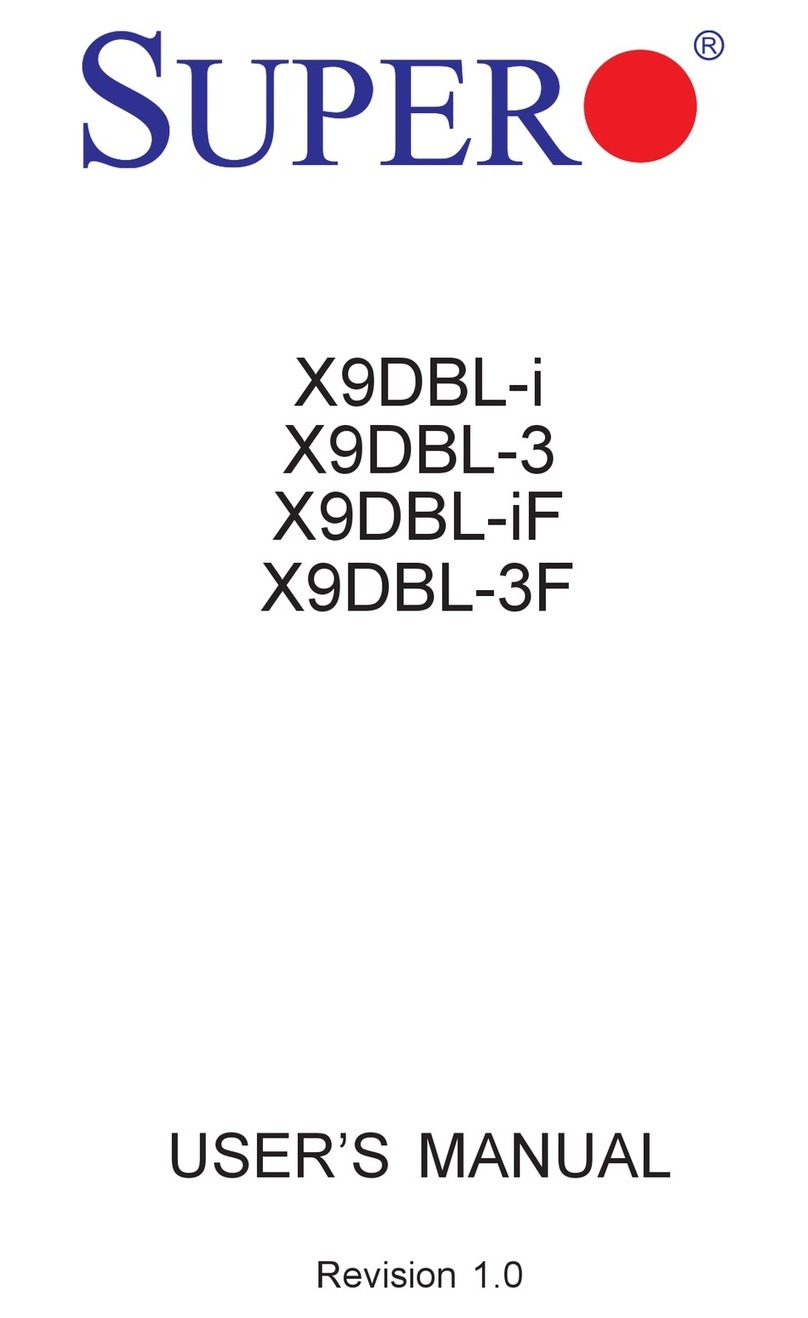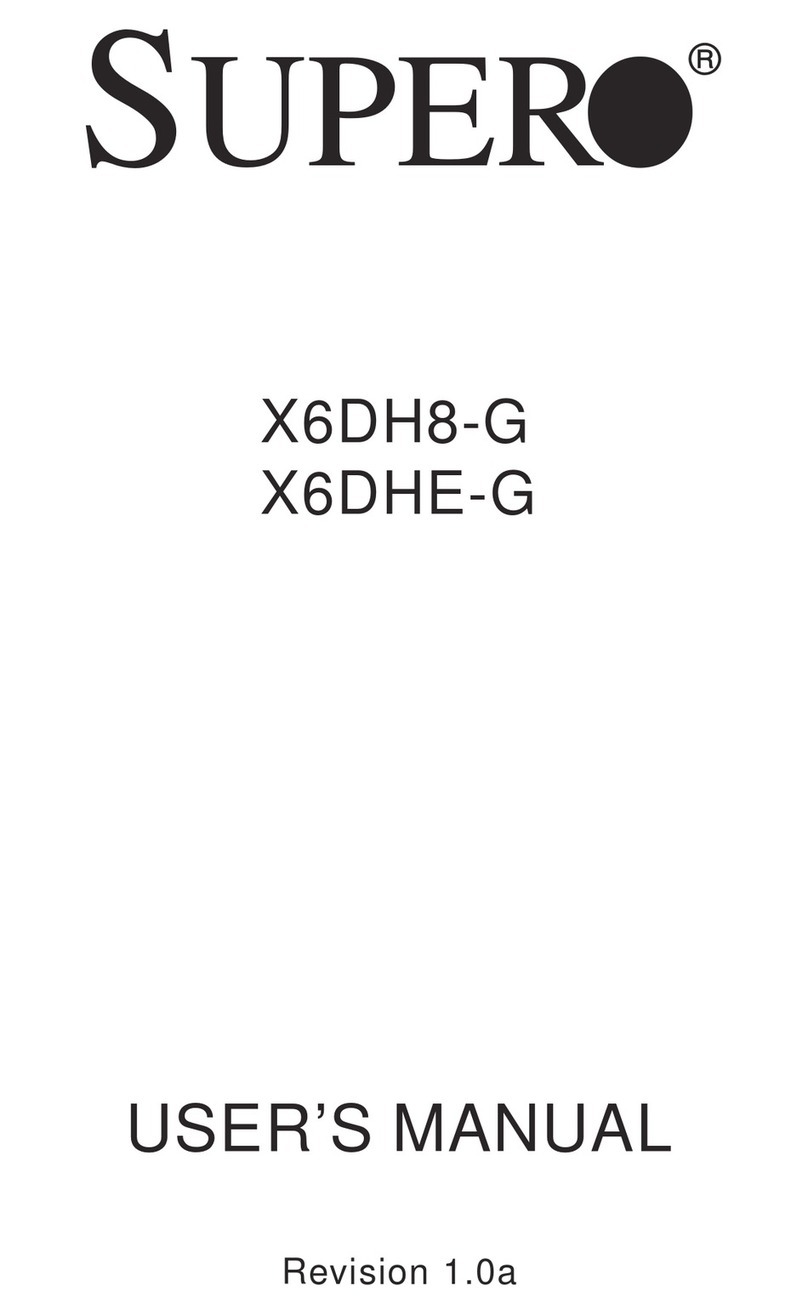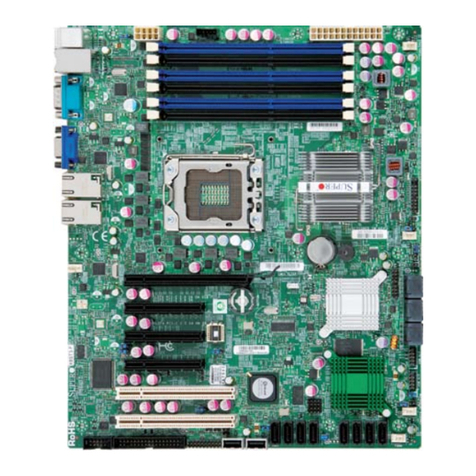
SUPER P3TDLR User’s Manual
iv
Table of Contents
Preface
About This Manual ...................................................................................................... iii
Manual Organization ................................................................................................... iii
Chapter 1: Introduction
1-1 Overview......................................................................................................... 1-1
Checklist .................................................................................................... 1-1
Contacting Supermicro............................................................................ 1-2
SUPER P3TDLR Image ............................................................................. 1-3
SUPER P3TDLR Layout ........................................................................... 1-4
SUPER P3TDLR Quick Reference .......................................................... 1-5
Server Works LE Chipset: System Block Diagram ............................. 1-6
SUPER P3TDLR Motherboard Features................................................ 1-7
1-2 Chipset Overview........................................................................................... 1-9
1-3 Special Features............................................................................................. 1-9
ATI Graphics Controller ........................................................................... 1-9
BIOS Recovery......................................................................................... 1-9
Recovery from AC Power Loss ........................................................... 1-9
1-4 PC Health Monitoring.................................................................................... 1-10
1-5 ACPI/PC 98 Features ................................................................................... 1-11
1-6 Power Supply ............................................................................................... 1-13
1-7 Super I/O......................................................................................................... 1-13
Chapter 2: Installation
2-1 Handling the P3TDLR Motherboard.............................................................. 2-1
Precautions ............................................................................................... 2-1
Unpacking.................................................................................................. 2-2
2-2 Motherboard Installation ................................................................................ 2-2
2-3 Connecting Cables ......................................................................................... 2-3
Connecting Data Cables .......................................................................... 2-3
Connecting Power Cables....................................................................... 2-3
Connecting the Control Panel ................................................................. 2-4
2-4 I/O Ports ............................................................................................................ 2-5
2-5 Installing Processors ...................................................................................... 2-5
2-6 Installing Memory ............................................................................................ 2-7
2-7 Connector Definitions .................................................................................... 2-9
Power Supply Connectors ..................................................................... 2-9
Power Supply Fail Enable/Disable ......................................................... 2-9
